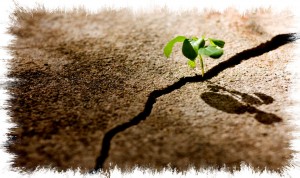In my reading at the moment, I am currently inhabiting two vastly different worlds: one, the dark, Gothic corridors of ‘The Hunchback of Notre Dame’ by Victor Hugo, and the other, the contemplative and theological depths of ‘The City of God’ by St Augustine of Hippo. At first glance, these two texts seem to come from different places; one a romantic novel from 19th-century France, the other a theological treatise from 5th-century Rome. Yet, as I delve into the opening chapters of both works, I am struck by a common thread: the place of the arts in society and how they are used by seemingly competing visions of our world.
I have also been thinking again this month about the architectural design of Bradford Cathedral and how, I have been told, Edward Maufe, the architect who designed our East end, wanted to articulate a coming together of the mundane and the sacred. The West end was to be experienced and understood as a convening space for the whole of Bradford society. The East end would be the focus of sacred worship. Whether that is true or not I don’t know but there is a strong architectural difference between these two spaces in our Cathedral.
The interplay between these two spaces is characterised by St Augustine as two cohabitating ‘cities’; the City of God symbolising the divine, eternal order and the City of the World symbolising human civilisation with all its flaws. I want to examine briefly the more nuanced interaction between these two ‘cities’ to see if there is something fruitful to be found for us at Bradford Cathedral to offer our city as we head into 2025, where Bradford will be UK City of Culture, as well as other Cathedrals as they wrestle with the stewardship of their own sacred/secular space.
Hugo begins his story, not with the titular hunchback, Quasimodo, but with a scene set in Paris’s grand cathedral, Notre Dame (arguably a major character in the book) during the Festival of Fools. In these opening pages, we are introduced to the clash between the religious order represented by the cathedral and the chaotic, almost carnivalesque atmosphere of the festival outside. Here, art is both sacred and profane, elevated and debased, reflecting the dual nature of humanity itself.
Similarly, Augustine, in the opening books of ‘The City of God’, discusses the dichotomy of the two cities: the City of God and the City of the World. For Augustine, the City of the World is marked by its temporal, fleeting nature and its inclination towards sin and self-glorification. Yet, even within this human city, Augustine acknowledges the presence of art, culture, and human achievements, which, though marred by sin, still bear the potential to reflect divine truth. In the early chapters, he argues that the polytheistic worship and rituals of the Graeco-Roman world which heavily influenced and controlled the public performances and artistic artefacts is more to be blamed for the fall of that civilisation than the acceptance of Christianity into their cultural milieu.
Bradford Cathedral aspires to be a beacon of spiritual and artistic expression amidst the bustling life of our city. Its walls, filled with history, uniquely tell the story of the whole community and its faiths. Just as Hugo uses Notre Dame to symbolise the connection between the sacred and the secular, Bradford Cathedral serves as a constant reminder of the spiritual heritage and the rich cultural tapestry that defines the city of Bradford. It is a space where the divine meets the everyday, and where art, I aim to show, can serve as a bridge between the two.
In reflecting on these two great works, it becomes clear that the arts have always occupied this central place in human society. They are a means through which we explore our relationship with the world around us, with each other, and with the divine. Whether in the grand architecture of a cathedral, the lively performance of a play, or the quiet contemplation of a painting, the arts offer us a glimpse into the deeper truths of existence.
Hugo and Augustine remind us that the arts are both a gift and a responsibility. They have the power to inspire and uplift, but also to distract and lead astray. As we engage with the arts, whether as creators or as audience members, we must do so with a sense of discernment and purpose. We must strive to see beyond the surface, to seek the truth that lies beneath, and to recognise the metaphysical fingerprints, whether good or bad, in the works of human hands.
In a world that often seems consumed by the immediate and the material, the arts call us to remember the eternal, to lift our eyes towards the heavens even as we walk the streets of our earthly city. They remind us that we are more than the sum of our parts, that we are creatures of both body and soul, and that in every brushstroke, every note, and every word, there is the potential to glimpse the divine.
The opening chapters of ‘The Hunchback of Notre Dame’ introduce us to Pierre Gringoire, a struggling playwright whose dramatic piece is set to be performed during the Festival of Fools. Gringoire embodies the romantic ideal of the artist: impoverished, passionate, and slightly out of touch with the mundane concerns of everyday life. His work, a Mystery play titled ‘The Good Judgment of Madame the Virgin Mary’, is meant to be a serious, thoughtful exploration of divine justice. Yet, it quickly becomes evident that Gringoire’s high-minded artistic vision is out of sync with the boisterous, irreverent mood of the crowd.
The Flemish visitor, Jacques Coppenole, crystallises this disconnect when he dismisses Gringoire’s Mystery as a waste of time, preferring the spontaneous entertainment of the festival over the playwright’s carefully crafted narrative. Coppenole’s comment is not just a critique of Gringoire’s play but a broader statement on the role of art in society. To Coppenole, the art that matters is the art that entertains, that is immediate and accessible. Gringoire’s highbrow ambitions are lost on a crowd that craves spectacle, not contemplation.
Hugo uses Gringoire’s predicament to illustrate the fragile place of the artist in society. Gringoire’s struggle to have his work appreciated reflects a larger struggle between different conceptions of art: art as a serious, almost sacred endeavour, and art as entertainment, something that should delight and distract. Hugo’s portrayal of Gringoire is sympathetic but tinged with irony; the artist is seen as a tragic figure, striving for an ideal that the world, in its indifference or ignorance, fails to recognise.
Augustine, too, is concerned with the role of art, but his focus is on the potential of art to lead people away from God. He acknowledges the beauty of the arts but warns against their capacity to distract and mislead. For Augustine, the highest purpose of art is to direct the soul towards the divine, not to entertain or merely please the senses. In this light, Gringoire’s predicament can be seen as emblematic of a deeper tension: the artist’s desire to convey truth and meaning versus the public’s desire for amusement.
I find myself caught in this tension. I, obviously, tend towards the Gringoire/Augustinian direction but we at Bradford Cathedral must constantly navigate the balance between art as sacred and art as entertainment. I return, again and again, to my reflections on the Empty Space and how we might make meaningful and prophetic contributions to the cultural narrative of our city whilst having to ensure such endeavours provide us with, understandably necessary, financial return. Like Gringoire, I must remember that there is no measurable point in expending time and money in creating a statement if no one is going to hear it or it leads to the closure of the means to share it.
Gringoire’s failure to connect with his audience is not just a personal failure but a reflection of society’s failure to appreciate the deeper value of art. The public’s preference for the rowdy, unrestrained entertainment of the Festival of Fools over Gringoire’s thoughtful play mirrors the City of the World’s inclination towards the immediate and the material. It is a reminder of how easily society can overlook the things of true, lasting value in favour of the fleeting pleasures of the moment.
Both Hugo and Augustine recognise the profound impact that artists have on society. For Hugo, the artist is a visionary, someone who can see beyond the mundane realities of daily life and capture the essence of what it means to be human. The artist is both a creator and a communicator, someone who bridges the gap between the sacred and the secular, the eternal and the temporal. Through their work, artists invite us to see the world anew, to recognise the beauty in the ordinary and the extraordinary in the everyday.
Augustine, while perhaps more circumspect, also acknowledges the power of the artist. He understands that artists have the ability to shape the minds and hearts of their audience, to lead them towards truth or away from it. Augustine calls for artists to use their gifts wisely, to create works that not only delight the senses but also elevate the soul. For Augustine, the ultimate purpose of art is not self-expression or entertainment, but the glorification of God.
In the end, both Hugo and Augustine challenge us to consider not just the place of the arts in society, but the place of society in the grand, divine tapestry of creation. Gringoire’s plight is a poignant reminder of the fragile position of the artist, caught between the demands of the world and the pursuit of a higher ideal. His failure is not just his own but a reflection of a society that has lost its way, that has forgotten the true purpose of art. Yet, even in this failure, there is hope. For as long as there are artists like Gringoire, striving to build, create, and imagine, we can participate in the ongoing story of the world, a story that began long before us and will continue long after we are gone. In this, the arts are not just a reflection of society—they are a bridge between heaven and earth, a testament to the enduring and transcendent nature of the human spirit…
… how can we translate that value to also be financial? Answers on a postcard and sent to Bradford Cathedral, please!



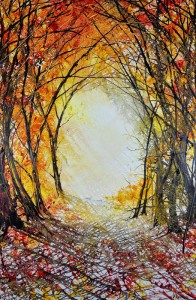

 All artists are seeking that surprise because it is a divine moment; a meeting with a force unnameable, holy. It is un-manufacturable and many have tried to force it only to be left high and dry. The reason it can’t be rushed or made to happen is because if you’re focussing on creating a surprise it will no longer be a surprise.
All artists are seeking that surprise because it is a divine moment; a meeting with a force unnameable, holy. It is un-manufacturable and many have tried to force it only to be left high and dry. The reason it can’t be rushed or made to happen is because if you’re focussing on creating a surprise it will no longer be a surprise.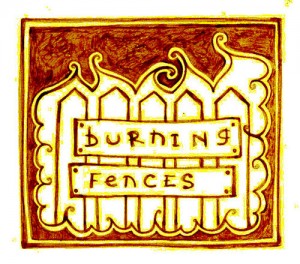 I have had the privilege of being welcomed into a community over the last year which has had an ongoing and deeply transformative impact on me and my vocation as an ordained priest. The community are mainly in their twenties and would, at a cursory glance, be classified as ‘arty’ intellectual types, although this is not entirely true; not that they are not either of those things but that which unites this group isn’t those two general categories. It is only in the last month or so that I have begun to grasp the ‘charism’, the ‘je ne sais qua’, of Burning Fences.
I have had the privilege of being welcomed into a community over the last year which has had an ongoing and deeply transformative impact on me and my vocation as an ordained priest. The community are mainly in their twenties and would, at a cursory glance, be classified as ‘arty’ intellectual types, although this is not entirely true; not that they are not either of those things but that which unites this group isn’t those two general categories. It is only in the last month or so that I have begun to grasp the ‘charism’, the ‘je ne sais qua’, of Burning Fences.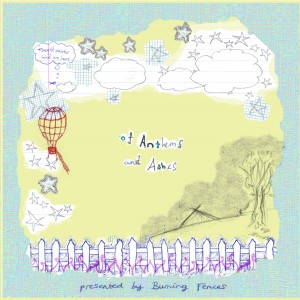 Before I stumbled through the doors one cold December night, this community had been meeting, singing and telling stories for a year or more. They had produced a CD of songs which they had developed entitled ‘Of Anthem and Ashes’. The images that were resonating with them then and remain reverberating through our times together are phoenix like resurrections; songs sung in the rubble, new plants breaking through concrete. These images have always resonated with me and it’s why I know I am a ‘fence burner’.
Before I stumbled through the doors one cold December night, this community had been meeting, singing and telling stories for a year or more. They had produced a CD of songs which they had developed entitled ‘Of Anthem and Ashes’. The images that were resonating with them then and remain reverberating through our times together are phoenix like resurrections; songs sung in the rubble, new plants breaking through concrete. These images have always resonated with me and it’s why I know I am a ‘fence burner’.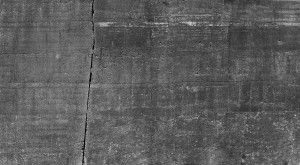 The times when Church is most frustrating, for me, is in the ‘necessary organization’. What irks me is the lack of convincing Biblical precedent. The Temple system failed and yet here we are in the 21st century rebuilding it. I get it, organic is messy and uncontrollable, unpredictable but it’s how the world functions. We human beings are devastating when we control and tinker with the organic creation. We’ve tried to organize the world and what we discover is we’re trapped in boxes which do not fit nor encourage us to flourish in the ways in which we should.
The times when Church is most frustrating, for me, is in the ‘necessary organization’. What irks me is the lack of convincing Biblical precedent. The Temple system failed and yet here we are in the 21st century rebuilding it. I get it, organic is messy and uncontrollable, unpredictable but it’s how the world functions. We human beings are devastating when we control and tinker with the organic creation. We’ve tried to organize the world and what we discover is we’re trapped in boxes which do not fit nor encourage us to flourish in the ways in which we should.